#tiger species
Explore tagged Tumblr posts
Text
youtube
#wildlife#10 Most Powerful Prehistoric Wild Cats#prehitoric wild cats#wild cats#smilodon#saber toothed tiger#xenosmilus#top 10 most powerful wild cat#Most Powerful Extinct Tiger Species#wildciencias#tiger#tiger species#tasmanian tiger#Longdan tiger#Trinil Tiger#Caspian tiger#Ngandong Tiger#What is the rarest tiger?#What is the most powerful tiger species?#extinct creatures#siberian tiger#tigers#saber-toothed tiger#extinct tigers#saber tooth tiger#bali tiger#Youtube
2 notes
·
View notes
Text
You’ve seen those photos of dogs snapped through catching a treat, with just the silliest faces? I see those and raise you: a tiger catching meatballs.


This is Kali, a Sumatran tigress at the Point Defiance Zoo & Aquarium in Tacoma.
#animal photography#zoo photography#my photography#funny animals#tiger#big cat#Sumatran tiger#endangered species#meat
16K notes
·
View notes
Text
Camera-trapping data revealed in a new study show a steady recovery of tigers in Thailand’s Western Forest Complex over the past two decades.
The tiger recovery has been mirrored by a simultaneous increase in the numbers of the tigers’ prey animals, such as sambar deer and types of wild cattle.
The authors attribute the recovery of the tigers and their prey to long-term efforts to strengthen systematic ranger patrols to control poaching as well as efforts to restore key habitats and water sources.
Experts say the lessons learnt can be applied to support tiger recovery in other parts of Thailand and underscore the importance of the core WEFCOM population as a vital source of tigers repopulating adjacent landscapes.
The tiger population density in a series of protected areas in western Thailand has more than doubled over the past two decades, according to new survey data.
Thailand is the final stronghold of the Indochinese tiger (Panthera tigris corbetti), the subspecies having been extirpated from neighboring Cambodia, Laos and Vietnam over the past decade due to poaching, habitat loss and indiscriminate snaring...
Fewer than 200 tigers are thought to remain in Thailand’s national parks and wildlife sanctuaries, only a handful of which are sufficiently undisturbed and well-protected to preserve breeding tigers.
The most important of these protected areas for tigers is the Huai Kha Khaeng Thung Yai (HKK-TY) UNESCO World Heritage Site, which comprises three distinct reserves out of the 17 that make up Thailand’s Western Forest Complex (WEFCOM). Together, these three reserves — Huai Kha Khaeng Wildlife Sanctuary, Thungyai Naresuan West and Thungyai Naresuan East — account for more than a third of the entire WEFCOM landscape.
Now, a new study published in Global Ecology and Conservation documents a steady recovery of tigers within the HKK-TY reserves since camera trap surveys began in 2007. The most recent year of surveys, which concluded in November 2023, photographed 94 individual tigers, up from 75 individuals in the previous year, and from fewer than 40 in 2007.
Healthy tiger families

The study findings reveal that the tiger population grew on average 4% per year in Hua Kha Khaeng Wildlife Sanctuary, the largest and longest-protected of the reserves, corresponding to an increase in tiger density from 1.3 tigers per 100 square kilometers, to 2.9 tigers/100 km2.
“Tiger recoveries in Southeast Asia are few, and examples such as these highlight that recoveries can be supported outside of South Asia, where most of the good news [about tigers] appears to come from,” said Abishek Harihar, tiger program director for Panthera, the global wildcat conservation organization, who was not involved in the study.
Among the camera trap footage gathered in HKK-TY over the years were encouraging scenes of healthy tiger families, including one instance of a mother tiger and her three grownup cubs lapping water and lounging in a jacuzzi-sized watering hole. The tiger family stayed by the water source for five days during the height of the dry season.
The team of researchers from Thailand’s Department of National Parks, Wildlife and Plant Conservation, the Wildlife Conservation Society, Kasetsart University, and India’s Center for Wildlife Studies deployed camera traps at more than 270 separate locations throughout the HKK-TY reserves, amassing 98,305 days’ worth of camera-trap data over the 19-year study period.
Using software that identifies individual tigers by their unique stripe patterns, they built a reference database of all known tigers frequenting the three reserves. A total of 291 individual tigers older than 1 year were recorded, as well as 67 cubs younger than 1 year [over the course of the study].
Ten of the tigers were photographed in more than one of the reserves, indicating their territories straddled the reserve boundaries. The authors conclude that each of the three reserves has a solid breeding tiger population and that, taken together, the HKK-TY landscape is a vital source of tigers that could potentially repopulate surrounding areas where they’ve been lost. This is supported by cases of known HKK-TY tigers dispersing into neighboring parts of WEFCOM and even across the border into Myanmar.
Conservation efforts pay off
Anak Pattanavibool, study co-author and Thailand country director at the Wildlife Conservation Society, told Mongabay that population models that take into account the full extent of suitable habitat available to tigers within the reserves and the likelihood that some tigers inevitably go undetected by camera surveys indicate there could be up to 140 tigers within the HKK-YT landscape.
Anak told Mongabay the tiger recovery is a clear indication that conservation efforts are starting to pay off. In particular, long-term action to strengthen systematic ranger patrols to control poaching as well as efforts to boost the tigers’ prey populations seem to be working, he said.
“Conservation success takes time. At the beginning we didn’t have much confidence that it would be possible [to recover tiger numbers], but we’ve been patient,” Anak said. For him, the turning point came in 2012, when authorities arrested and — with the aid of tiger stripe recognition software — prosecuted several tiger-poaching gangs operating in Huai Kha Khaeng. “These cases sent a strong message to poaching gangs and they stopped coming to these forests,” he said."
...ranger teams have detected no tiger poaching in the HKK-TY part of WEFCOM since 2013.
-via Mongabay News, July 17, 2024
#tigers#thailand#thai#endangered species#big cats#conservation#wildlife#wildlife conservation#wildlife photography#poaching#good news#hope
2K notes
·
View notes
Text
0 notes
Text


Hoenn crossing, or something
#Yes this trend is long dead but it lives . to ME#ORAS#hoenn#do i tag all these guys. oh my god.#pokemon trainer may#rival wally#pokemon trainer brendan#contest star lisia#gym leader wallace#lore keeper zinnia#champion steven stone#aqua leader archie#magma leader maxie#aqua admin matt#magma admin tabitha#aqua admin shelly#magma admin courtney#how do ppl tag the cahracters even i never know#quick thing inbetween other things cus im putting off BACKGROUNDS Like a true artist#everyones meant to be a different species but i hope that shows#may monkey (based on the npc from happy home designer though) wally mouse brendan dog#lisia duck wallace ostrich zinnia chameleon ((also based on npc)) steven tiger#archie bear maxie goat matt eagle tabitha hamster shelly wolf courtney cat
899 notes
·
View notes
Text


Scabiosa japonica var. alpina
411 notes
·
View notes
Text
Dandelion News - September 8-14
Like these weekly compilations? Tip me at $kaybarr1735 or check out my new(ly repurposed) Patreon!
1. Pair of rare Amur tiger cubs debuting at Minnesota Zoo are raising hopes for the endangered species

“[The Minnesota Zoo’s] Amur tigers have produced 57 cubs, [… 21 of which] have gone on to produce litters of their own, amounting to another 86 cubs. […] “They’re showing a lot of resiliency, which is something that we work hard for in human care. We want these animals to have a lot of confidence and be able to adapt to new environments just as they’re doing today.””
2. Powered by renewable energy, microbes turn CO₂ into protein and vitamins

“The team designed a two-stage bioreactor system that produces yeast rich in protein and vitamin B9. [… The protein] levels in their yeast exceed those of beef, pork, fish, and lentils. […] Running on clean energy and CO2, the system reduces carbon emissions in food production. It uncouples land use from farming, freeing up space for conservation[… and] will help farmers concentrate on producing vegetables and crops sustainably.”
3. JCPenney Launches Apparel Collection Aimed At Wheelchair Users

“A major department store is rolling out a new line of clothing specifically tailored to meet the needs of women who use wheelchairs featuring options for both everyday wear and special occasions. [… The clothing have] modifications like zippers located for easy access, pocket positioning and extended back rises optimized for the seated position and shorter sleeves to limit interference with wheels.”
4. Snails bred in Edinburgh Zoo sent to re-populate species in French Polynesia
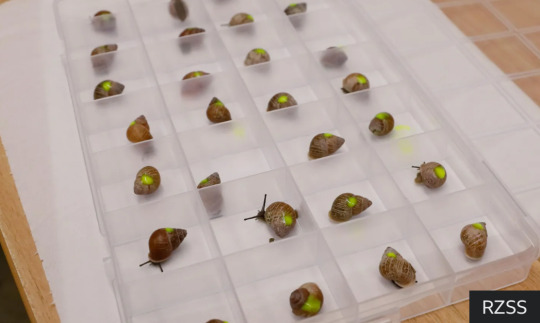
“Thousands of rare partula snails bred at Edinburgh Zoo are to be released in French Polynesia to restore the wild population of the species.The last surviving few of the species were rescued in the early 1990s[….] 15 species and sub-species [are being bred in zoos for repopulation], the majority of which are classed as extinct in the wild.”
5. [NH Joins 19 Other States] to Provide Essential Behavioral Health Services Through Mobile Crisis Intervention Teams
“[CMS] approved New Hampshire’s Medicaid State Plan Amendment for community-based mobile crisis intervention teams to provide services for people experiencing a mental health or substance use disorder crisis. […] The multidisciplinary team provides screening and assessment; stabilization and de-escalation; and coordination with and referrals to health, social, and other services, as needed.”
6. Recovery plan for Missouri population of eastern hellbender
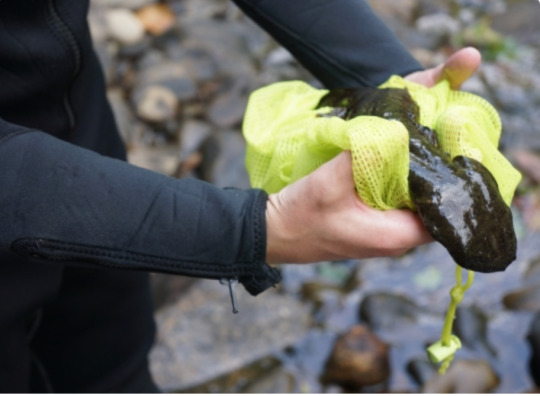
“It is expected that recovery efforts for the Missouri DPS of the eastern hellbender will reduce sedimentation and improve water quality in the aforementioned watersheds, which will also improve drinking water, as well as benefit multiple federally listed mussels, sport fish and other aquatic species.”
7. How $7.3B will help rural co-ops build clean power—and close coal plants
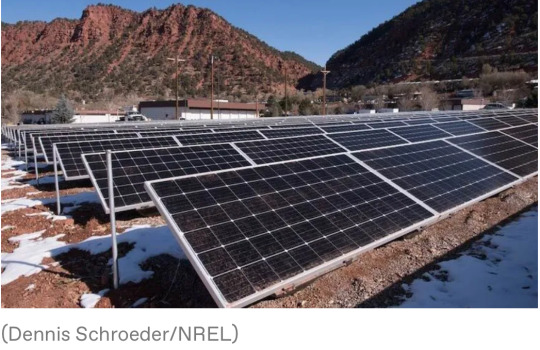
“[The funds are] serving about 5 million households across 23 states [… to] build wind and solar power, which is now cheaper than coal-fired power across most of the country. […] Some of it will be used to pay down the cost of closing coal plants[….] federal funding could help co-ops secure enough wind, solar, and battery resources to retire their entire coal capacity by 2032, cutting carbon emissions by 80 to 90 percent and reducing wholesale electricity costs by 10 to 20 percent[….]”
8. Native-led suicide prevention program focuses on building community strengths

“[Indigenous researchers have] designed programs that aim to build up a community’s endemic strengths, rather than solely treating the risks facing individuals within that community. By providing support and resources that enable access to Alaska Native cultural activities, they hope to strengthen social bonds that build resilience. […] “In a Yup’ik worldview, suicide is not a mental health disorder, and it’s not an individual affliction, it’s a disruption of the collective.””
9. Another rare Javan rhino calf spotted at Indonesia park

“A new Javan rhino calf has been spotted in an Indonesian national park, the facility's head said Friday, further boosting hopes for one of the world's most endangered mammals after two other […] calves were spotted earlier this year at the park, which is the only habitat left for the critically endangered animal.”
10. Transparent solar cells can directly supply energy from glass surfaces

“[Researchers have] unveiled a method of supplying energy directly from glass of buildings, cars, and mobile devices through transparent solar cells. […] It has also succeeded in charging a smartphone using natural sunlight. It also proved the possibility that a screen of a small mobile device can be used as an energy source.”
September 1-7 news here | (all credit for images and written material can be found at the source linked; I don’t claim credit for anything but curating.)
#hopepunk#good news#nature#tiger#endangered species#sustainability#animals#nutrition#jc penney#wheelchair user#adaptive clothing#fashion#snail#edinburgh#scotland#french polynesia#mental health#new hampshire news#missouri#hellbenders#salamander#wind energy#solar power#clean energy#native#community#rhino#technology#baby animals#solar panels
499 notes
·
View notes
Text
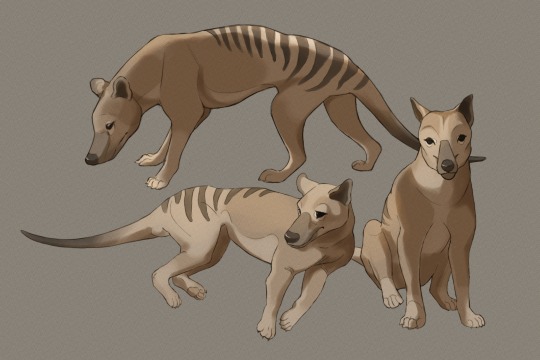
Thylacine studies from the colorized footage.
#thylacine#tasmanian tiger#tasmania#extinct species#extinct animals#wildlife illustration#wildlife art#marsupial#animal art#zoology#animal studies#animal artist#tasmanian wolf#australia#australian wildlife#australian animals
771 notes
·
View notes
Photo
The tiger are facing the danger, let's stop poaching them

Tigers of the world, both current and EXTINCT.
https://endangeredtigers.org/tiger-species/
#tigers#wildlife#save tigers#tigers extinction#sumatran tiger#siberian tiger#indochinese tiger#malayan tiger#bengal tiger#south china tiger#caspian tiger#bali tiger#javan tiger#tiger conservation#tiger species
23 notes
·
View notes
Text




Next
Previous
First
Sorry for the delay, on top of The Horrors I got concussed u-u
Not sure when the next page will be bc I only have 1 buffer left aaaaa
Me: Kindred will have a simplified style so i can be fast
Also me: *slowly drawing closer and closer to White Cat Gold Plains level of detail bc i can't control myself*
.... also this page Literally has two white cats in gold plains oh my god art imitates art
Oh yeah, Smilodon time!
I have been having fun working out ways to differentiate the Fleet Fangs and Ice Fangs, besides just "one has bigger teeth". So they get more bearlike shapes and lips + the hypothesized extended gumline down the sabers (they also use boar and sow like bears rather than tom and molly like cats)
#i kept trying to put ear tufts on the smilodon bc im so used to drawing them on the homotherium#but No they're Not Allowed tufts that's one of the species differentials#mammothclan#moon 6#clangen#poppy#quiver#pounce#burnet#homotherium#snakespots#mammothmoon#pleistocene#ice age#stone age#sabertooth#sabercat#sabertooth tiger#scimitar cat#kindred of the mammoth#warriors#warrior cats#smilodon#bootherium#mammoth moon
303 notes
·
View notes
Photo
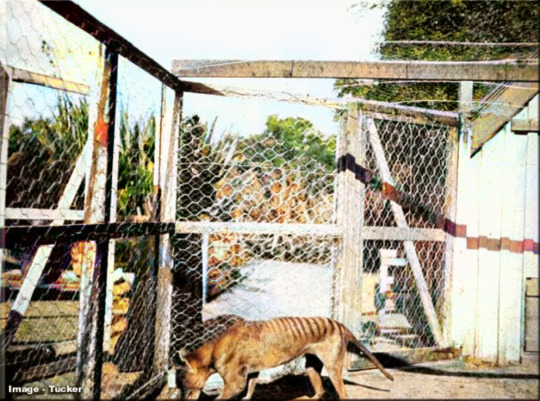

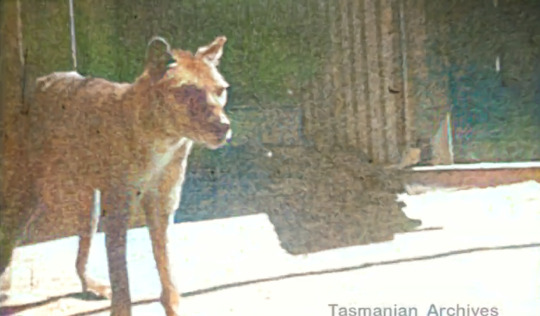
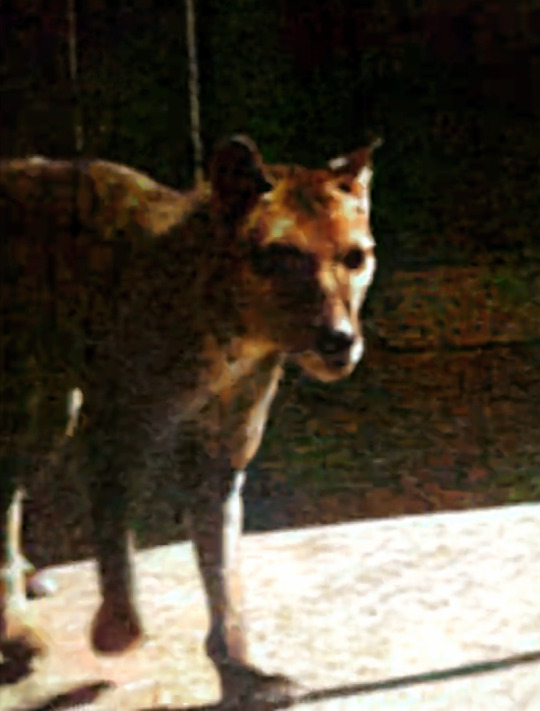
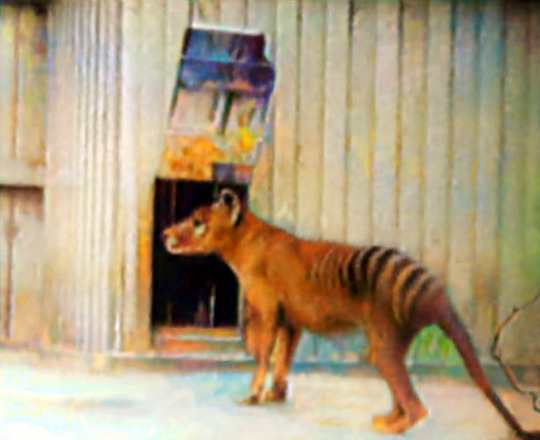
Colorized Thylacines pt. 3
#its like i ring a dinner bell each time i upload these#yall never disapoint#thanks for loving t. cynocephalus as much as i do#Thylacinus Cynocephalus#thylacine#thylacinus#Tasmanian tiger#tasmanian wolf#extinct#extinct species#historic photo
3K notes
·
View notes
Text

There's a Banksia woodland nearby where I live. It's almost untouched by humans (no paths, litter, etc, only a few weeds here and there, but not many) and has extremely high biodiversity, characteristic of this ecosystem.
I visited it the other day and sat beneath the glorious, low-lying canopy of Banksia attenuata, and began imagining a thylacine prowling through the bushes looking for bandicoots as they would have done 2000+ years ago here in Noongar country.
#my art#art#digital art#spiritual art#thylacine#extinct animals#extinct species#thylacine art#tasmanian tiger#tasmanian wolf#australian wildlife#australia#banksia#artists on tumblr
358 notes
·
View notes
Text
"In a historic step toward the first-ever restoration of the tiger population to a nation where they were once extinct, two captive Siberian tigers have been translocated from Anna Paulowna Sanctuary, Netherlands, to the Ile-Balkhash Nature Reserve in Kazakhstan.
This remarkable event is part of an ambitious program led by the Government of Kazakhstan with support from WWF and the UN Development Program to restore the Ile-Balkhash delta ecosystem and reintroduce tigers to the country and region, where the species has been extinct for over 70 years.
“It is a high priority for Kazakhstan to work on the restoration of rare species. For ecological value it is important that our biodiversity chain is restored. And that the tiger that once lived in this area is reintroduced here,” said Daniyar Turgambayev, Vice-minister of the Ministry of Ecology and Natural Resources of Kazakhstan.
In the early 21st century, genetic studies were carried out on bones and furs held in national collections which revealed that the population of tigers living between Iran, southern Russia, Central Asia, and the areas around the Caspian Sea was extremely similar to Siberian tigers.
This led scientists to conclude that Felis vigrata, the former name of the Caspian tiger, was simply the Siberian tiger that developed into a distinct population, but not a new subspecies, over generations of being separated by habitat fragmentation.
Bodhana and Kuma, the male and female tigers, will be housed in a spacious semi-natural enclosure of three hectares [7.4 acres] within the Ile-Balkhash Nature Reserve. Any of their offspring will be released into the wild and will become the first tigers to roam Kazakhstan in decades, and potentially the first-ever international tiger reintroduction.
They will play an important role in the establishment of a new tiger population in the region where they had previously been wiped out as a result of excessive hunting.
“Today marks a monumental conservation milestone to bring tigers back to Kazakhstan and Central Asia,” said Stuart Chapman Leader of WWF Tigers Alive. “This tiger translocation is a critical step to not only bring back the big cat to its historic homeland but also to rewild an entire ecosystem.”
Progress towards restoration of the area is already well underway with recovering and reintroduction of critical tiger prey species like the Kulan (Asiatic wild ass), and reforestation of over 120 acres with native trees. Being the apex predator, tigers will play a significant role in sustaining the structure and function of the ecosystem on which both humans and wildlife rely...
“With the launch of the tiger reintroduction program, we have witnessed a significant change—the revival of nature and our village of Karoi,” said Adilbaev Zhasar, the head of the local community group Auyldastar.
“This project not only restores lost ecosystems, but also fills us with pride in participating in a historic process. Because of small grants from WWF, we have the opportunity to do what we love, develop small businesses, and create jobs in the village, which brings joy and confidence in the future.”
From the very beginning, the local community around Ile-Balkhash Nature Reserve has been closely involved in the project. This includes support for improved agricultural techniques and the future development of nature tourism in the area.
The translocation of these tigers is the first of several planned in the coming years, with a goal to build a healthy population of about 50 wild tigers by 2035, starting with this pioneering pair for breeding. This initiative is not only a testament to the resilience of the species but also a powerful example of governments, conservation organizations, and local communities cooperating in wildlife and nature conservation."
-via Good News Network, November 27, 2024
#tiger#tigers#big cats#wild cats#kazakhstan#asia#central asia#biodiversity#endangered species#conservation#rewilding#wildlife conservation#ecology#nature reserve#good news#hope
1K notes
·
View notes
Text
Is this what gender euphoria is like?
Over the last few weeks I bought an adopt and then commissioned a refsheet for my longtime fursona. Just seeing it even before commissioning any art filled me with a feeling I don't quite have words to describe, like suddenly things are right in a way they never have been before.
If this is what gender euphoria is like, holy crap, no wonder trans folk will fight so hard to get it. Everyone everywhere should experience this at least once and if possible always.

Hi, I'm Fzzr. It's nice to meet you. This time, for real.
Thank you @kolaepup, for being the person to bring me truly to life. Though serendipity and a few hours' work, you made me feel more like myself then perhaps I ever have.
[Image ID: A portrait of an anthropomorphic tiger. His fur is light green, with calico-like markings in dark green with black stripes. There are two big stripes on his left cheek and one on his right. His hair is medium length and wavy, in a mix of white, light green, dark green, and black. His tongue is sticking out playfully. His tongue, nose, and inside of his ears are light blue-green. His whiskers and eyebrows are dark blue-green. His eyes are green. He is happy. ./End ID]
739 notes
·
View notes
Text
13/20 Thylacine! I almost didn’t include the stripes, I don’t think you would’ve recognized it without them.
Get this sticker here!
#video#art#my art#paleoart#paleontology#science#illustration#thylacine#tasmanian tiger#tasmanian wolf#tasmanian hyena#marsupial wolf#extinction#extinct animals#extinct species
235 notes
·
View notes
Text


This 36x48” oil on canvas diptych is part of a series I’ve been working on based on the thylacine, also known as the “Tasmanian Tiger” or marsupial wolf.
One of my biggest interests has always been animals, and in particular the ones that humans have destroyed. Every lost or vanishing species is its own story, and as an illustrator theirs are the stories that I am the most invested in telling (hence the blog).
The thylacine is one of the classic examples of human-caused extinction: an utterly unique creature, deliberately exterminated due to a combination of greed, ignorance, hubris, and fear.
Scared or anxious marsupials have a habit of stretching their jaws in a display known as a yawn (you’ve probably seen memes of opossums that look like they’re yelling—it’s the same thing). This display was especially striking in the thylacine, which could open its jaw to over 90°. Some of the most famous photos of thylacines capture them in this attitude of fear.
Unfortunately for the thylacine, humans have more direct methods of dealing with the things that scare them.
The title of this pair of paintings is ‘When They Are Frightened, They Show Their Teeth’.
The overall series is called ‘Here Be Monsters’, as a nod to both the far-flung environs of the thylacine, and the behavior of those who intruded upon it.
Stay tuned for more.
#extinction#extinct#extinct animals#thylacine#tasmanian tiger#oil painting#animal illustration#extinct species#extinction stories
2K notes
·
View notes